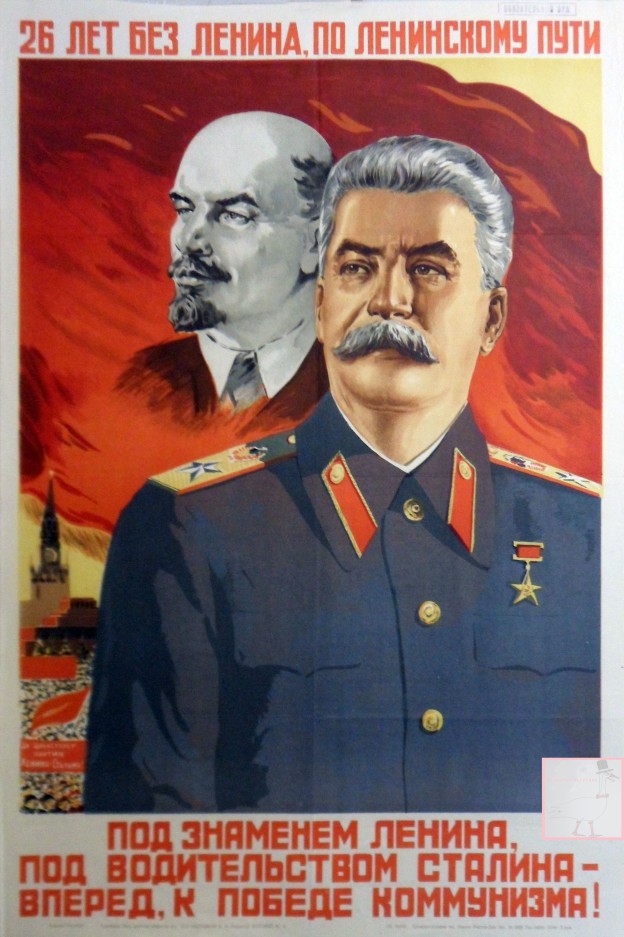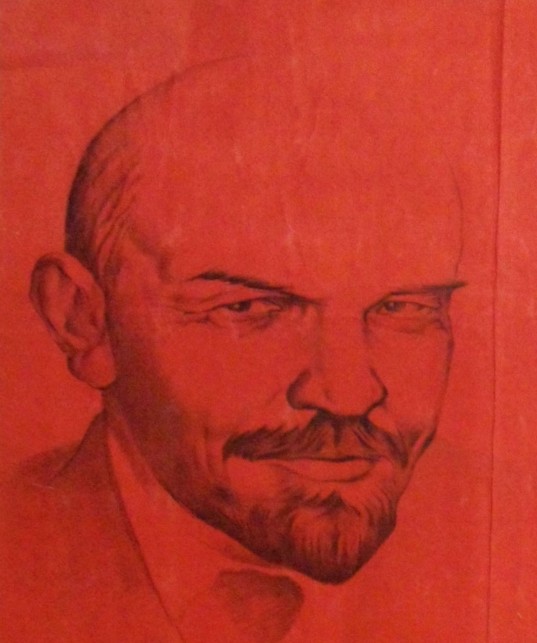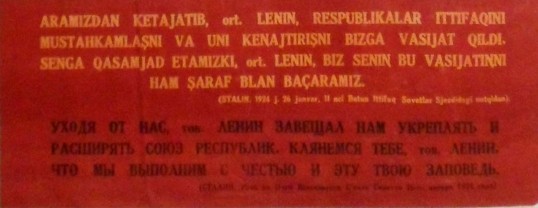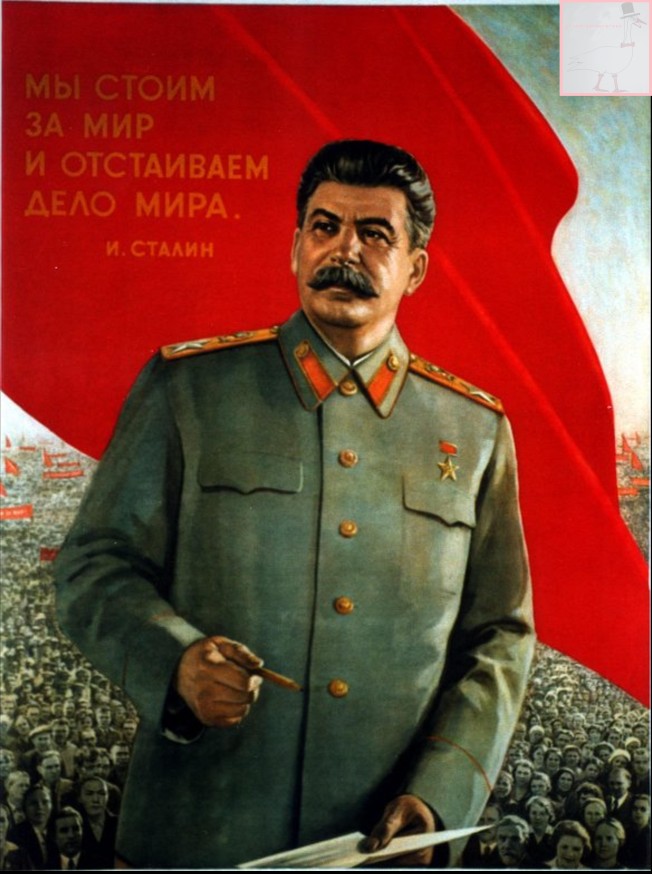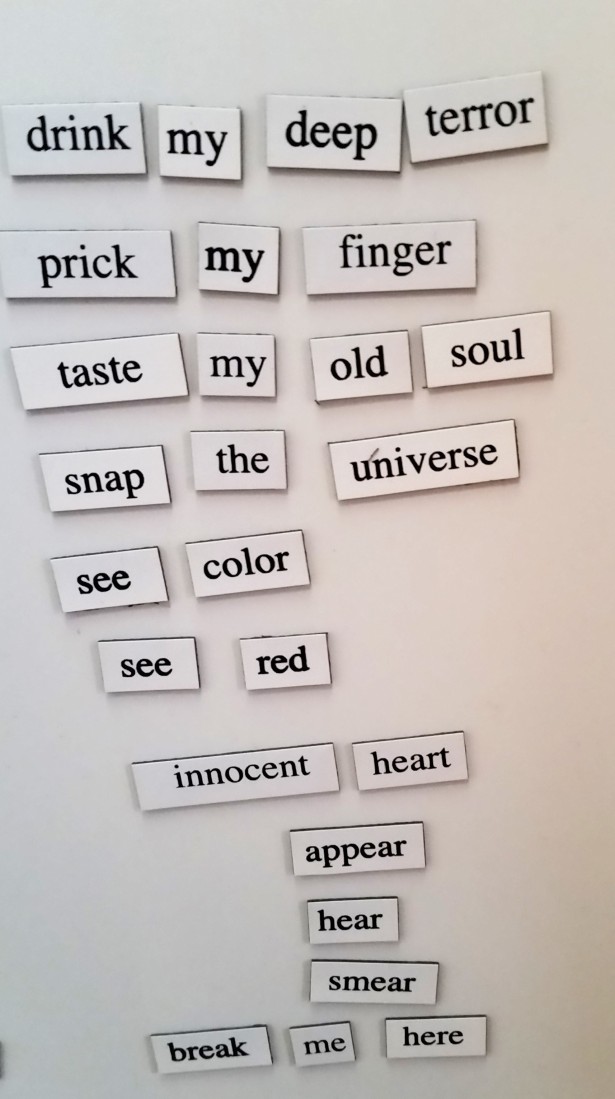
I. Yang (янг, и.), Voters of Stalin’s constituency vote in Moscow on June 26, 1938 in the elections to the Supreme Soviet of the RSFSR for the great leader of the people, dear and beloved Iosif Vissarionovich Stalin (избиратели сталинского избирательного округа в москвы голосуйте 26 июня 1938 г. на выборах в верховный совет рсфср), 1938
Stalin poster of the week is a weekly excursion into the fascinating world of propaganda posters of Iosif Stalin, leader of the USSR from 1929 until his death in 1953.
Here, Anita Pisch will showcase some of the most interesting Stalin posters, based on extensive research in the archives of the Russian State Library, and analyse what makes these images such successful propaganda.
Anita’s new, fully illustrated book, The personality cult of Stalin in Soviet posters, 1929 -1953, published by ANU Press, is available for free download here, and can also be purchased in hard copy from ANU Press.
Despite the Bolshevik Party having a firm and unshakeable grip on power in the USSR from the late 1920s until the fall of the Soviet Union in December, 1991, elections were held in the Soviet Union under Stalin, throughout the period of his leadership.
When the Constitution of the USSR was adopted on 5 December, 1936, socialism was officially ratified as having been successfully accomplished, and the beginning of the next phase, the transition to communism, commenced.
It was mandated in the new Constitution that elections be held for all government bodies, from local councils to the Supreme Council of the Soviet Union. Elections to the Supreme Soviet were held on 12 December, 1937 and these were the first elections to be held under the new constitution.
Although these were declared multi-candidate elections, meaning that, under Article 124 of the Constitution, bodies like the Orthodox Church could field candidates, this decision was reversed, largely due to paranoia surrounding the Great Purge of 1937. Mass arrests were carried out by the NKVD (People’s Commissariat for Internal Affairs) shortly before the elections.
The Communist Party was subject to re-election, and in his pre-election speech as a candidate, Stalin took the floor begrudgingly and with the humility for which he had become well-known. After some self-effacing remarks, he continued:
I have been nominated as candidate, and the Election Commission of the Stalin District of the Soviet capital has registered my candidature. This, comrades, is an expression of great confidence. Permit me to convey to you my profound Bolshevik gratitude for this confidence that you have shown the Bolshevik Party of which I am a member, and me personally as a representative of that Party.
I know what confidence means. It naturally lays upon me new and additional duties and, consequently, new and additional responsibilities. Well, it is not customary among us Bolsheviks to refuse responsibilities. I accept them willingly.
For my part, I would like to assure you, comrades, that you may safely rely on Comrade Stalin. You may take it for granted that Comrade Stalin will be able to discharge his duty to the people, to the working class, to the peasantry and to the intelligentsia.
Further, comrades, I would like to congratulate you on the occasion of the forthcoming national holiday, the day of the elections to the Supreme Soviet of the Soviet Union. The forthcoming elections are not merely elections, comrades, they are really a national holiday of our workers, our peasants and our intelligentsia. Never in the history of the world have there been such really free and really democratic elections — never! History knows no other example like it. The point is not that our elections will be universal, equal, secret and direct, although that fact in itself is of great importance. The point is that our universal elections will be carried out as the freest elections and the most democratic compared with elections in any other country in the world.
Joseph Stalin, “Speech Delievered by J.V. Stalin at a Meetings of Voters of the Stalin Electoral District, Moscow,” From the Pamphlet Collection, J. Stalin, Speeches Delivered at Meetings of Voters of the Stalin Electoral District, Moscow, Foreign Languages Publishing House, Moscow, 1950, pp. 7-18.
The majority of seats in both chambers of the Supreme Soviet were won by the Communist Party of the Soviet Union (Bolsheviks) (CPSU), of which Stalin was General Secretary.
In 1938, the legislative elections for the Russian Soviet Federative Socialist Republic were held, with Stalin leading the party and up for re-election in his constituency. This 1938 electoral poster by I. Yang is similar to electoral posters throughout the world, featuring a portrait of the leader of the party, surrounded by a slogan urging voters to endorse the party candidate, and symbolic emblems of the party.

Stalin manages to look humble, clever and visionary all at once in this portrait.
Stalin, with narrowed eyes indicative of shrewdness, looks out to the viewer’s right, the direction associated with the future. The plain collar of his military-style worker’s tunic can be seen, and he appears as both clever and humble, intelligent enough to lead the nation, but still one of the ordinary people at heart.
Stalin’s portrait is framed in gold and he is surrounded by red flags, a red star, and hammer-and-sickle emblems. Red and gold are colours that are both traditionally associated with the Bolsheviks, and also have a long tradition as sacred colours in Russian Orthodox icons.
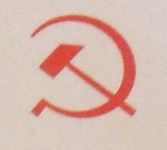
The hammer-and-sickle emblem was a logo for the Bolsheviks
The text of the poster informs the populace of the date of the election and requests that they vote for ‘dear and beloved Iosif Vissarionovich Stalin’. Unsurprisingly, the CPSU won 568 seats in the 1938 election, with 159 seats falling to independent candidates.
Anita Pisch‘s new book, The personality cult of Stalin in Soviet posters, 1929 – 1953, is now available for free download through ANU Press open access, or to purchase in hard copy for $83. This lavishly illustrated book, featuring reproductions of over 130 posters, examines the way in which Stalin’s image in posters, symbolising the Bolshevik Party, the USSR state, and Bolshevik values and ideology, was used to create legitimacy for the Bolshevik government, to mobilise the population to make great sacrifices in order to industrialise and collectivise rapidly, and later to win the war, and to foster the development of a new type of Soviet person in a new utopian world.
Dr Anita Pisch’s website is at www.anitapisch.com

